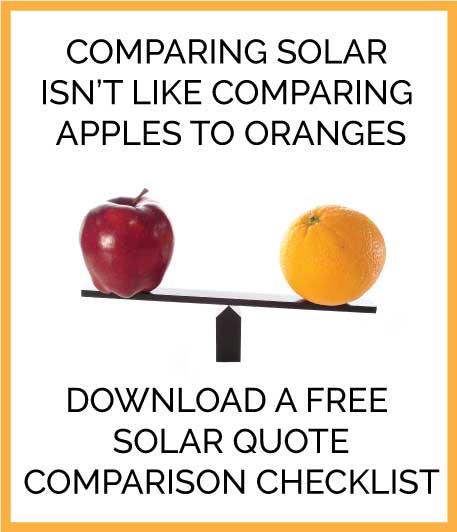Solar Microinverters vs. DC Optimizers

When buying solar, one important piece of equipment to consider is the inverters, the piece of equipment that converts the DC (direct current) energy collected by the solar panel into AC (alternating current) energy you can use inside your home or business. Some solar systems operate off of single, large inverters that convert energy for multiple panels. However, this technology has been improved, and is being replaced with microinverters, a more reliable and efficient option.
This equipment should be evaluated by how well it stands up to compromises including:
- Shade factors, such as a passing cloud.
- Equipment failure and its’ impact on the overall system.
- Longevity and long-term production.
Three Types of Solar Inverters
Microinverters
Microinverters are the newest, most reliable inverter option. A small inverter is installed on each solar panel, allowing each panel to operate and be monitored independently. This technology may cost a little bit more up front, but pays for itself in efficiency, reliability and by minimizing repair costs. Even FEMA has chimed in, recommending microinverters as the best option in storm-prone areas. A system with a microinverter that fails will continue to work at nearly full capacity.
See Enphase Microinverters in action:
String Inverters
- String inverters with DC optimizers are the next step down from microinverters. With string inverters (with or without DC optimizers), any sort of compromise, such as the passing of a cloud or a Frisbee on the panel, affects the entire string. DC optimizers help mitigate shade but don’t completely eliminate the impact. A single string inverter works with multiple panels (called a string), but each panel is installed with a DC optimizer which helps reduce individual panels from compromises – a problem previously experienced with simple string inverters. The biggest difference is that when a string inverter goes bad the entire system will stop operating until it’s repaired or replaced.
- String inverters without DC optimizers are the oldest, least reliable technology, and should be avoided. Without DC optimizers to help mitigate shade compromises, the power production is low and unreliable.
| Microinverters | String Inverters with DC Optimizers | String Inverter, NO DC Optimizers | |
| Number of units per system | One for each panel | One inverter supports string of multiple panels. | One inverter supports string of multiple panels. |
| Single point of failure? | No | Yes | Yes |
| FEMA recommendation* | Best | Not recommended | Not recommended |
| Safety? | Low-voltage, Lower fire risk* |
High voltage |
High voltage |
| If one inverter stops working? | The rest continue to operate at full capacity. | The entire string is compromised. | The entire string stops working. |
| If one panel experiences compromise, such as a passing cloud? | The rest continue to operate at full capacity. | The entire string operates at a reduced level. | The entire string stops working. |
| Warranty | 25 years | Usually 10-12 years | Usually 10-12 years |
*sources: enphase.com and fema.gov
The Bottom Line
Microinverters are the clear choice for today’s modern solar owner. Why? Because microinverters are more reliable, higher production, have longer warranties, and if one happens to fail, the rest keep working.